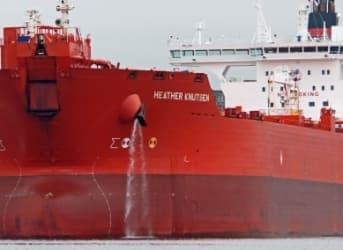There has been a lot of hype in recent years about the U.S. having become an energy superpower. American companies have fracked and produced record levels of oil and gas, refined enormous volumes of processed fuels, and mined gigantic coal fields. And even though American consumers are some of the most profligate users of these energy resources, there has still been quite a bit left over for export.
That is particularly true with coal, which has run into a suddenly hostile domestic market and has sought to sell its product overseas. But that is increasingly true of oil and gas as well, due to the flood of production that has come online.
Obviously, to export coal, oil, and gas, companies need to get their products to the coast. The Gulf of Mexico, and various ports on the east coast (Norfolk and Baltimore in particular) are the main exit points.
But the West Coast has become a key priority for an array of coal miners and gas producers. And the reason for that is not a mystery – exporting from the Pacific Ocean would allow companies to access the vast and rapidly growing energy markets in Asia. Related: Better Times Ahead For Oil, If You Can Believe It
However, would-be exporters have run into a wall of opposition that runs up and down the Cascades, with the inability to make progress on a long list of projects. The Sightline Institute, a Seattle-based environmental group, has nicknamed the region the “Thin Green Line,” referring to the physical barrier that local opposition has effectively thrown up in front of export projects in Oregon, Washington, and British Columbia.
Coal has been hardest hit. Coal mined in the Powder River Basin in Wyoming and Montana is some of the lowest-cost coal produced anywhere in the country. Much of it is burned in power plants, but producers want to send millions of tons to China. So far, they have failed, due to the inability to get export terminals approved on the West Coast.
A series of coal export terminals that companies had hoped would already be up and running are effectively on ice. For example, an Australian company, Ambre Energy, had planned on building an export terminal capable of handling nearly 50 million tonnes of coal per year (mtpa) on the Columbia River. But environmental groups may have created an insurmountable hurdle. They pressured regulators into considering not just local environmental effects – such as rail traffic, water pollution, etc. – but also the global effects from increased greenhouse gas emissions when the coal is burned overseas. The project is still facing regulatory scrutiny. Related: Could This Be The Next Great Renewable Energy Source?
Several other terminals in Washington and Oregon have also been held up due to environmental fears. Meanwhile, the companies hoping to see their coal exported, such as Arch Coal and Peabody, are struggling to stay afloat amidst a worldwide downturn in the coal markets.
Oil-by-rail projects have run into similarly stiff opposition. Several permits have been delayed or rescinded. For example, native tribes are suing to stop a rail project that would allow BNSF to connect Bakken oil to refineries in Washington owned by Tesoro.
The Sightline Institute highlights a series of other successful attempts at blocking coal, oil-by-rail, and even propane-by-rail projects, many of which that have run into dead ends with municipal and state regulatory agencies. The Thin Green Line is making it difficult to conduct business for the fossil fuel industry across the entire region. The Greenpeace protest of Shell’s icebreaker in Portland last month was just one example of this trend. Related: Russia’s Natural Gas Plans May Be Little More Than Hype
There are other fights that the energy industry could win, however. Natural gas companies are in better shape, and could yet succeed in obtaining access to the Pacific. The Jordan Cove LNG project in Coos Bay, Oregon could allow for 6 mtpa of LNG exports, and it is slowly obtaining the necessary permits. And British Columbia is pushing forward to allow Petronas to build a massive LNG export facility on its Pacific Coast.
And while it is still early days, the ban on crude oil exports is looking weaker by the day. A legislative push in the U.S. Congress to remove the ban is gaining momentum, and if successful, the glut of oil could begin to flow abroad. In a sign that the Obama administration may be on board with oil exports, the Department of Commerce will allow oil swaps with Mexico, Reuters reported on August 14. A blanket repeal on the export ban is probably not too far behind.
ADVERTISEMENT
Obviously, the Gulf of Mexico will be much more important than the West Coast for oil exports, but if an export ban is removed, that will be another test for the Thin Green Line in the Pacific Northwest.
By Nick Cunningham of Oilprice.com
More Top Reads From Oilprice.com:
- This Week In Energy: The Growing Threat From China
- Unorthodox Plays For The Savvy Energy Investor
- What’s Really At Stake With The Iran Nuclear Deal


















